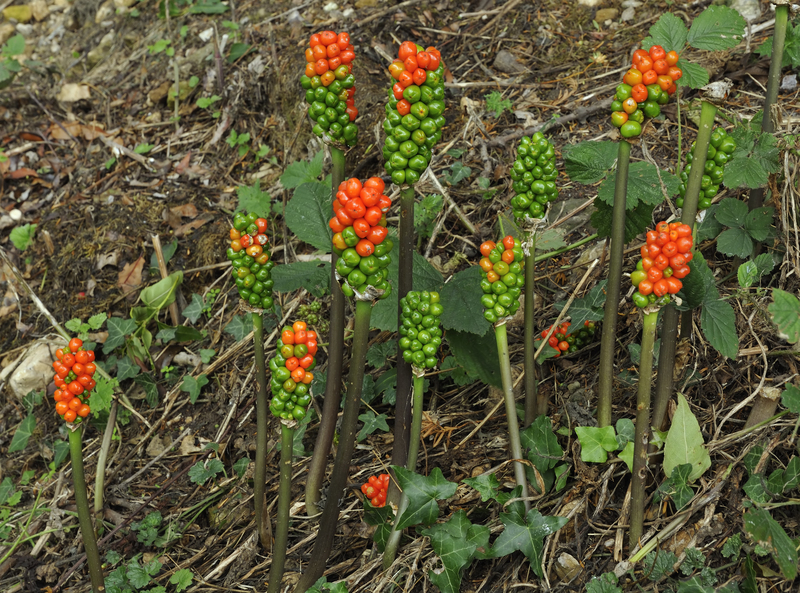How to Fortify Your Garden Plants for Winter
Posted on 26/08/2025
How to Fortify Your Garden Plants for Winter
Winter is one of the most challenging seasons for both novice and experienced gardeners. The cold temperatures, frost, snow, and fluctuating weather conditions can take a toll on your cherished plants. Properly preparing and protecting your garden for the cold months not only ensures their survival but sets the stage for a thriving spring. In this comprehensive guide, learn the best techniques and strategies to fortify your garden plants for winter and keep your landscape vibrant year after year.
Why It's Essential to Protect Garden Plants in Winter
Unprotected plants can succumb to frost damage, dehydration, root rot, and even death. Understanding the unique challenges of winter is crucial.
- Freezing temperatures can rupture plant cells.
- Alternate freezing and thawing damages soil structure and dislodges roots.
- Snow and ice weight can break branches or compact delicate shrubs.
- Reduced sunlight leads to decreased photosynthesis.
- Harsh winds draw moisture from leaves and stems, causing desiccation.
Taking proactive steps improves plant health, reduces winter losses, and provides beauty in the bleakest months. Let's dive into how to protect your garden from winter damage with confidence.

Assess Your Garden: Identify Vulnerable Plants
Not all garden plants need equal protection. To fortify your garden plants for winter effectively, it's important to start with an assessment:
- Know your hardiness zone and compare it to your plant's tolerance.
- Identify tender perennials, young trees, newly-planted shrubs, and container plants.
- Look for indicators of stress: thin stems, poor root growth, or recent transplants.
- Consider location: Wind-exposed, shaded, or low-lying spots face colder microclimates.
Focus your efforts on the plants most at risk. Vegetables like kale may thrive, but ornamentals like camellias could suffer without care.
General Strategies to Prepare Your Garden for Cold Weather
1. Water Properly Before the Ground Freezes
Moist soil retains more heat than dry soil. Before your region's first deep freeze, irrigate thoroughly:
- Saturate soil down to the root level, especially around trees and shrubs.
- Avoid overwatering--soggy soil can cause root rot during dormant months.
- Once the ground freezes, stop watering to prevent ice formation around roots.
2. Mulch Your Beds for Insulation
Mulching is one of the simplest and most effective defenses against winter stress. Mulch maintains even soil temperatures, conserves moisture, and suppresses weeds.
- Apply 2-4 inches of organic mulch (straw, shredded leaves, pine needles, or wood chips).
- Keep mulch a couple of inches away from stems and trunks to prevent rot.
- Check mulch throughout the winter and replenish if displaced by wind or melting snow.
3. Prune with Purpose
Proper pruning can minimize storm damage and prevent disease in winter months:
- Remove dead, weak, or diseased branches after leaf drop.
- Avoid heavy pruning just before winter (may stimulate tender growth easily damaged by frost).
- Shape trees and shrubs to reduce wind load and potential breakage.
4. Add Physical Plant Protection: Covers and Cloches
Simple barriers can make a big difference when it comes to fortifying your plants against winter elements:
- Use frost blankets, burlap, old sheets, or garden fleece to cover vulnerable vegetation before a cold snap.
- For smaller plants, use plastic cloches or upside-down buckets to shield from freezing winds.
- Build temporary windbreaks with fencing or evergreen boughs for extra protection.
5. Move Containers and Tender Plants Indoors
Container plants and tropical species are especially sensitive to frost:
- Relocate pots indoors or to sheltered spots like garages, basements, or sunrooms.
- If leaving them outside, cluster together for warmth and wrap pots with bubble wrap for added insulation.
- Elevate pots off the ground to prevent freezing soil and root damage.
6. Adjust Fertilizer Regimens
Late-season fertilization can do more harm than good:
- Stop fertilizing a month before the first expected frost.
- Excess nutrients can encourage new soft growth that's susceptible to freezing.
- Use slow-release, balanced fertilizers if needed, or amend with compost before the ground freezes.
Special Considerations: Protecting Different Types of Garden Plants
Fortifying Perennials for Winter
- Cut back dead foliage on herbaceous perennials, but leave seed heads for winter interest and wildlife.
- Apply extra mulch after the ground freezes for extra insulation.
- Divide and transplant only in early fall, so plants can establish roots before winter dormancy.
Shielding Trees and Shrubs
- Young trees benefit from trunk wraps or tree guards to prevent sunscald and rodent damage.
- Burlap screens reduce windburn on evergreen shrubs and exposed ornamentals.
- Attach branches with soft ties to prevent snow load breakage.
Vegetable Gardens and Raised Beds
- Protect overwintering vegetables (like garlic or spinach) with a layer of straw or row covers.
- Clear away debris to reduce pest and disease problems in spring.
- Cover soil in empty beds with mulch or a green manure crop to improve soil structure.
Care for Bulbs and Tubers
- Hardy spring bulbs (daffodils, tulips) benefit from a layer of mulch after planting in the fall.
- Dig up tender bulbs (dahlias, cannas) and store in a cool, dry place for winter.
Dealing with Extreme Cold and Unpredictable Weather
Weather can be unpredictable, and sudden cold snaps are on the rise. Stay vigilant and prepared:
- Monitor forecasts regularly, especially during early and late winter.
- Keep plant protection supplies accessible for last-minute emergencies.
- Double-cover sensitive plants (fleece plus plastic sheeting) for single-digit temperatures.
Long-Term Strategies for Creating a Winter-Resilient Garden
Choose the Right Plants
Plant selection is the foundation of a hardy winter garden.
- Favor natives and regionally adapted species that can tolerate your local climate.
- Create mixed plantings: evergreens offer wind protection; dense shrubs trap warmth.
- Experiment with microclimates in your garden--south-facing walls, boulders, or fences to shelter tender species.
Soil Improvement
Well-drained, organically-rich soil enables plants to withstand winter stress:
- Amend with compost or aged manure in autumn to boost nutrient reserves and improve structure.
- Test soil pH and adjust as needed for optimal plant health.
- Promote deep, healthy root systems for greater cold resistance.
Smart Garden Design for Winter Protection
- Anchor garden beds with windbreaks--hedges, fences, or ornamental grasses.
- Plant tender varieties in protected zones, away from wind tunnels or frost pockets.
- Maximize winter sunlight by pruning back encroaching trees or structures.
Caring for Your Plants During Winter
Inspect Regularly
Check on your garden throughout winter to catch problems early:
- Brush off heavy snow from branches to prevent breakage.
- Look for signs of animal damage; use repellents or physical barriers if needed.
- Monitor for dehydration, especially during dry winters, and water on mild days if needed.
Be Patient in Spring
Don't rush to remove mulch or prune back damaged stems as soon as temperatures rise. Late frosts can still occur. Allow plants to gradually acclimatize and resume growth naturally.
Common Mistakes to Avoid When Fortifying Garden Plants for Winter
- Using plastic mulch directly over plants: Can trap moisture, causing rot. Always use breathable materials unless heavy rain is forecasted.
- Over-pruning: Removes necessary winter protection. Only cut dead or dangerous branches.
- Forgetting containers: Roots in pots freeze faster than in-ground plants; always move or insulate containers.
Eco-Friendly Winter Gardening Tips
- Use biodegradable mulches and avoid synthetic pesticides or fertilizers right before winter.
- Plant cover crops such as clover or winter rye to improve soil and provide habitat for beneficial insects.
- Leave seed heads and dead foliage for winter wildlife where appropriate.

Frequently Asked Questions about Winter Plant Fortification
How can I protect my garden from frost?
Cover plants with frost cloths or floating row covers, and insulate the soil with mulch. Water the soil before a freeze for extra warmth.
When should I mulch my garden for winter?
Apply mulch after the first hard frost but before the ground freezes solid to retain soil warmth but avoid attracting rodents early on.
Do I need to fertilize plants before winter?
Generally, do not fertilize past mid-fall, as this can encourage new growth that will be compromised by the cold.
Should I prune my shrubs in winter?
Prune only to remove dead or hazardous growth; heavy pruning should be reserved for late winter or early spring on most species.
Conclusion: Fortify Your Garden Plants for Winter with Confidence
Fortifying your garden plants for winter is an investment in the long-term health and beauty of your landscape. By assessing your garden, applying proper mulching and watering techniques, using physical plant protections, and considering your specific plants' needs, you can greatly increase winter resilience and ensure a flourishing spring bloom. Remember, winter preparation is ongoing: Monitor, adjust, and enjoy the peace of mind knowing your garden is protected from whatever the season brings.
Start preparing early, use the methods above, and watch your garden thrive even in the harshest winter months!
Related Resources:



